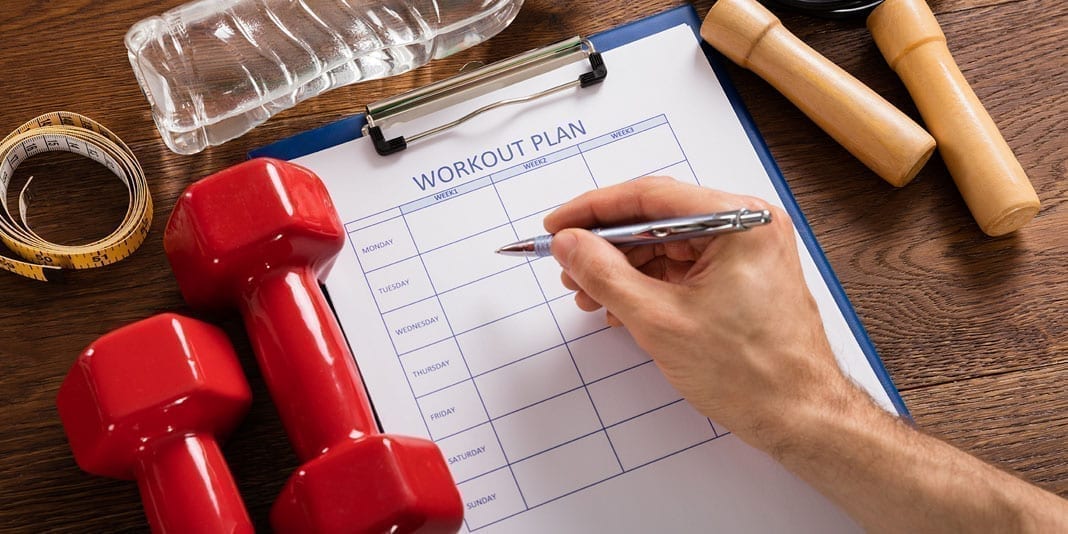The Centers for Disease Control (CDC) recently released a report that only one in five adults are meeting the government’s physical activity recommendations. Those recommendations, by the way, aren’t even high enough to be optimal for health. That means that 80 percent of people aren’t getting even some of the exercise they need to keep their bodies in tip-top shape!
If you’re feeling overwhelmed trying to figure out what the guidelines mean and whether or not you’re meeting them, we understand. It’s a lot of numbers and it can be hard to keep track. But don’t sweat (at least not until you get moving)! We’re here to break it down for you. We promise, it’s not hard at all.
MORE: Everyday Activities Are Just as Good as Hitting the Gym
First, why is this important?
Physical activity isn’t just about losing weight or building muscle (though those are two key benefits). It also helps you maintain your weight; keeps your arteries strong to prevent heart attack and stroke; reduces your risk of type 2 diabetes, cancer and all forms of disability; strengthens your bones; improves your mood; and boosts circulation to keep your skin looking firm and young.
In fact, women who get enough physical activity have a Real Age that’s nine years younger than their numerical age!
What kind of activity are we talking about?
Jogging, swimming, hitting the weight room at the gym and going to yoga class are all great examples of exercise. But don’t limit yourself! There are many ways to define physical activity—and you’re probably doing a lot of them already.
Walking your dog, gardening, lugging the laundry basket up and down the cellar stairs, mowing the lawn and even cleaning the house all count toward your total as long as you’re working hard enough to get your heart rate above normal. That’s what we call “moderate-intensity” aerobic activity. If your daily activities make you breathe hard and break a sweat, that puts them in the “vigorous-intensity” category, alongside playing tennis, bike riding and working out on the elliptical trainer. The CDC recommends two and a half hours of moderate-intensity activity each week. For maximum health, you really need to be getting in 10,000 steps, or equivalent, each day, which is slightly more than the CDC’s minimum.
QUIZ: Test the Value of Your Daily Activities
That covers aerobic activity. Then there’s muscle-strengthening, which involves weights, weight machines or using your body weight and gravity to work your muscles and give your bones a challenge. The more you work both your muscles and your bones, the stronger they will be. Examples here include lifting (weights, or that laundry basket, or a bag of peat moss, or your three year old), push-ups, crunches, squats and yoga poses. You want to work all your muscle groups: legs, hips, back, abdomen, chest, shoulders and arms. Do this at least two days a week.
Ok, so how do you do it?
That’s easy! Just follow our basic daily activity plan and you’ll be meeting those guidelines in no time.
MORE: Strenth-Training at Home, No Equipment Needed
Every day we want you to walk for 80 minutes, no excuses. It doesn’t have to be all at once, either. You can break it up into shorter walks throughout the day.
Then, each weekday—in addition to your 80 minutes of walking—do either Workout A or Workout B (alternate days):
Workout A: 20 minutes of moderate aerobics, followed by five minutes of yoga or stretching
Workout B: 10 minutes of strengthening, followed by five minutes of yoga or stretching
On Saturday, add an extra 30 minutes of walking (for a total of one hour and 50 minutes), plus 10 minutes of strengthening. On Sunday, walk for a total of one hour and 50 minutes.
MORE: 7 Steps to Getting to 10,000 Steps
Not so bad, right? Now get out there and show those statistics who’s boss!
For more information, you can see one of us, Dr. Mike, talk about this subject (for even old people like himself) here.




































